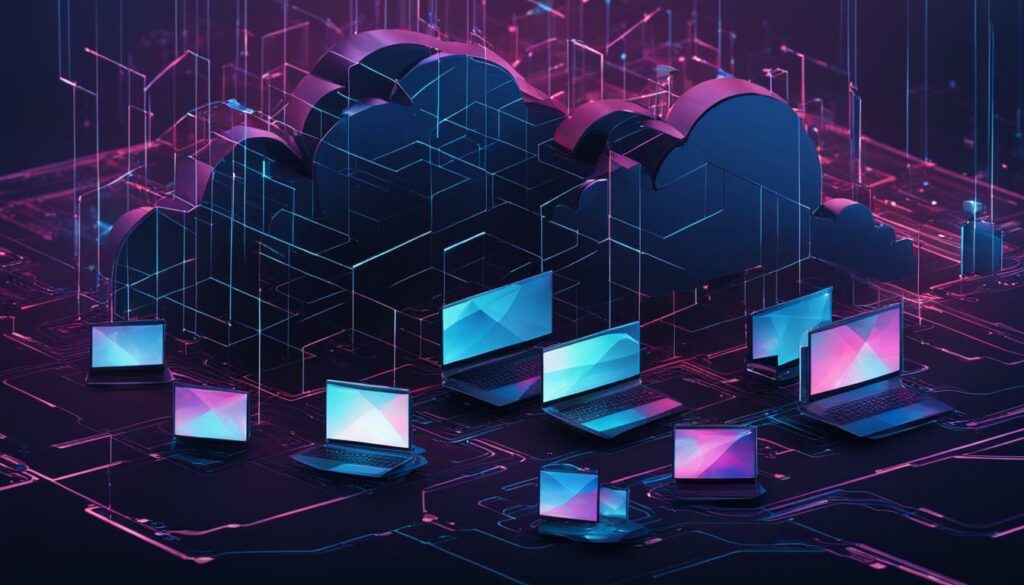Welcome to “Mastering Application Security Frameworks: A Professional Guide.” In this comprehensive resource, we will explore the world of application security frameworks and provide expert guidance on secure coding practices, vulnerability management, threat modeling, secure software development lifecycle, penetration testing, secure coding guidelines, secure coding standards, secure coding best practices, and security testing. Key Takeaways: Enhance your knowledge of application security frameworks Implement secure coding practices Manage vulnerabilities through effective vulnerability management Identify potential threats through threat modeling Follow secure software development lifecycle These key takeaways will help professionals in the software industry to establish and enhance their organization’s application…
Author: Christoph
Cloud security best practices are essential for businesses operating in the cloud to protect their environments from cyberattacks. It involves understanding the shared responsibility model with the cloud service provider and implementing effective security measures at the infrastructure and application layer. Key Takeaways: Understand the shared responsibility model between your organization and the cloud service provider. Secure the perimeter of your cloud environment with multilayer security guardrails. Monitor for misconfigurations and utilize cloud security posture management solutions. Implement identity and access management with role-based access control. Gain visibility into the security posture of your cloud environment and proactively manage security.…
Cloud security is crucial for startups looking to safeguard their valuable data and scale their business with confidence. As cloud computing becomes the norm for startups, it is important to address the security risks that come with it. Understanding the different deployment models of cloud computing, such as public, private, hybrid, multi-cloud, and community cloud, is essential for startups to choose the best fit for their needs. Cloud security is similar to traditional IT security but focuses specifically on protecting data, software applications, and infrastructure in the cloud. Startups face various security threats in the cloud, including data breaches, insecure…
Cloud security is of utmost importance in hybrid environments which combine public and private cloud platforms. As organizations increasingly adopt hybrid cloud strategies to leverage the benefits of both environments, ensuring data protection and enhancing security becomes crucial. In this article, we will explore the key aspects of cloud security in hybrid environments, discuss the role of technical controls, compliance, and vulnerability management, and provide best practices for securing hybrid clouds. Key Takeaways: Implementing technical controls such as encryption, automation, orchestration, access control, and endpoint security is essential for securing hybrid clouds. Cloud security is a shared responsibility, with the…
Endpoint Detection and Response (EDR) is a critical component of modern cybersecurity, providing proactive monitoring and response capabilities to protect businesses from evolving threats. Unlike traditional antivirus software, EDR continuously analyzes system behaviors to detect and address new threats in real-time. This comprehensive guide will explore the importance of EDR in safeguarding digital assets and enhancing network security. Key Takeaways: Endpoint Detection and Response (EDR) is essential for modern cybersecurity, offering proactive monitoring and response capabilities. EDR differs from traditional antivirus software by continuously analyzing system behaviors to detect and address new threats in real-time. Important considerations when selecting an…
In today’s digital landscape, securing your network with cloud-based endpoint protection is more crucial than ever. With the rise in cyber threats, traditional security measures like firewalls and antivirus programs are no longer sufficient. Endpoint security plays a vital role in safeguarding corporate networks from threats originating from local or remote devices. It provides advanced protection against sophisticated cyber attacks, ensuring the security and integrity of your organization’s data. Key Takeaways: Cloud-based endpoint protection is essential for securing corporate networks in the face of increasing cyber threats. Comprehensive endpoint security includes antivirus solutions, patching the operating system and applications, permission…
A robust cloud security incident response plan is vital for businesses to effectively protect against and respond to security incidents in the cloud. In today’s digital landscape, where cloud services are an integral part of business operations, having a well-prepared plan is essential to safeguard sensitive data and maintain business continuity. Key elements of a robust cloud security incident response plan include: Key Takeaways: Preparation is the foundation of a solid incident response plan, involving cybersecurity measures, incident management processes, and the right tools and personnel. Detection and analysis are crucial for identifying and assessing incidents, with proper documentation and…
In a rapidly changing threat landscape, implementing application security best practices is crucial for safeguarding software and protecting against vulnerabilities. Vincent Lin and YiYi Miao, software security experts, have shared their insights and tips on effective application security. By implementing these practices, organizations can enhance their application security and protect their data and reputation. Key Takeaways Understanding the importance of application security is essential in today’s evolving threat landscape. Creating a threat model helps identify potential vulnerabilities and establish a secure software development lifecycle. Following web application security best practices from OWASP ensures adherence to industry standards. Fostering a security-focused…
In today’s rapidly evolving digital landscape, open source application security software has emerged as a powerful tool to fortify your digital space and stay ahead in the cybersecurity game. By harnessing the collaborative power of open source development, organizations can leverage a wide range of software security tools and applications to enhance their overall security posture. Key Takeaways: Open source application security software offers a collaborative and innovative approach to fortifying digital spaces. The Cybersecurity and Infrastructure Security Agency (CISA) is actively promoting the use of open source software to improve safety and cybersecurity. Security challenges in open source software…
Endpoint security policy templates are crucial for protecting your business from cybersecurity threats and ensuring the safety of your digital assets. As more and more businesses rely on endpoint devices such as laptops, smartphones, and tablets to access their networks, the need for effective security measures becomes paramount. These templates provide expertly crafted guidelines and policies that outline best practices for endpoint security. They serve as a roadmap for businesses to establish network security guidelines, data protection policies, and other essential components of a comprehensive cybersecurity framework. With the help of these templates, businesses can implement policies such as mobile…











